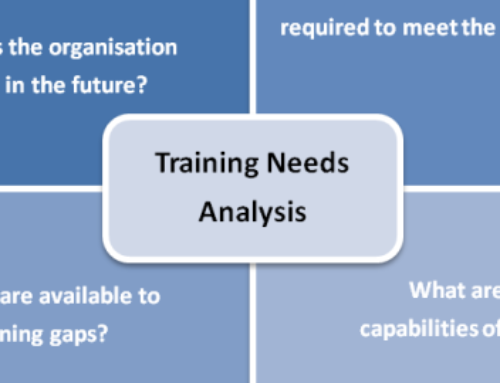Active Learning In Online Training
In 1991, Charles C. Bonwell and James A. Eison stated in their report Active Learning: Creating Excitement in the Classroom that active learning is about “involving students in doing things and thinking about what they are doing. (…) When using active learning students are engaged in more activities than just listening. They are involved in dialog, debate, writing, and problem solving, as well as higher-order thinking, e.g., analysis, synthesis, evaluation.” In other words, active learning describes an ideal learning process, as deep engagement with the training material is by far the most effective way to enhance knowledge retention.
Active Learning Benefits
Let us take an analytical look at the benefits of active learning:
- It addresses to different learning needs.
An instructional design that promotes active learning engages learners from the very first module as all eLearning activities are by default designed to promote interaction with the eLearning content. Active learning gives learners the opportunity to explore for themselves, “experimenting” with the eLearning content, which enhances knowledge retention. - It reinforces important skills, such as critical thinking and decision making.
Self-exploration makes it unavoidable for learners to enhance their critical thinking and decision making skills, as from the plethora of information offered, they need to learn how to evaluate what is important and what is not. Therefore, they gradually become agents of their own learning. A good instructional design, based on active learning, gives learners the opportunity to visualize immediately the consequences of their actions. Interactive branching scenarios and problem-based learning are ideal for enhancing critical thinking and decision making skills in eLearning. - It boosts learner motivation and performance.
Without any doubt, the fact that learners are given a choice on how to proceed with the eLearning content enhances their intrinsic motivation, as they are free to select the learning path they prefer, which is also closer to their personal interests. This has also a positive impact on their performance as they get immediate feedback for their actions. - It creates a strong sense of community through peer-to-peer interaction.
The fact that an instructional design based on active learning mainly focuses on self-exploration of the eLearning content does not necessarily mean that learners do not interact with their peers. On the contrary, social learning activities based on online discussions help learners to share experiences and good practices about the topic under study and draw their personal conclusions about the ideal course of action. Peer-to-peer interaction is also necessary in eLearning activities based group projects.
Active Learning Best Practices
Effective active learning depends on the ability of the online course facilitator to understand the essence of the eLearning course and then create an environment where learners can analyze, synthesize, evaluate and apply the information offered. Here are 3 of the best ways to put active learning into practice:
- Online debates.
Online debates reveal the complexity of issues and help learners understand that polarized, black and white thinking is rarely, if ever, the right way to resolve a dilemma; instead, it stunts progressive thought. During online debates learners are broken out into two groups that research, develop, and present opposing viewpoints on a topic. This allows them to take responsibility for their performance, as they need not only to develop their logical reasoning skills to defend their position, but also to make decisions about how they will use what they are learning. Furthermore, online debates reinforce their ability to adapt, as opposing views are rarely predictable and learners are able to rebuild their positions after hearing the other side. - Brainstorming.
Brainstorming is about thinking of alternative possibilities without judgement, in a comfortable environment. It involves working together as a group and encourages creative thinking and risk taking in order to generate new ideas and solutions, no matter how unclear or ineffective. In brainstorming, there are no “wrong” answers or suggestions; on the contrary, weak points are considered great opportunities for developing a deeper understanding of the topic in question in a highly supportive environment, which increases engagement levels. - Problem-based learning.
In this active learning practice, problem-based assessments present cases and examples that are relevant to learners and encourage them to turn theory into practice by applying what they are learning to real world situations. Problem-based learning motivates learners to develop their problem solving, critical thinking, and analytical skills; moreover, it offers opportunities for effective team work, as collaboration is highly encouraged to generate more ideas and solutions.
How To Use Active Learning In Online Training
How can active learning be applied to an online environment? Most importantly, how can your employees benefit from it during their online training? Here are some tips that may help you in integrating active learning into your online training course:
- Use a variety of learning strategies.
According to the Multiple Intelligences theory, different people learn in different ways. One of the most effective ways to promote active learning is to follow a learner-centered approach, and then incorporate multiple learning methods into it. Consider combining online discussions with thought provoking quizzes, role playing with storytelling, and problem solving exercises with compelling images and graphics; this way, you will meet different learning needs and easily engage all of your learners, whether they are auditory, visual, kinesthetic, and so on. - Follow a mistake-driven learning approach.
To put the brainstorming idea to practice, you need to find ways to help your employees develop their critical thinking skills without the fear of failure. Consider taking advantage of mistake-driven learning by creating a series of eLearning scenario questions that offer room for making mistakes and encourage your audience to focus attention on the eLearning content in a risk free environment. - Encourage collaboration.
Social learning is a great way to put active learning into practice, as it creates opportunities for discussing ideas, as well as collaborating on group projects and presentations. Generate online discussions on an online forum or on social media where your employees can freely express themselves, share their ideas and concerns, compare their notes, and discuss the key points of their online training. Just remember to establish a netiquette for appropriate participation and effective online communication. - Focus on interactivity.
The more the interactive elements of your online training course, the greater the degree of active learning. There is a variety of ways to integrate interactivity into your eLearning course, from simple drag and drop interactions to fascinating eLearning games and high quality videos. Even a typical, static presentation can be interactive, as long as you choose the right authoring tool to help you transform it into a dynamic medium. - Connect your online training course with the real world.
No matter how well designed your online training course is, it will not be of much use if it is irrelevant to your employees. One of the biggest benefits of active learning is that it allows your audience to apply what they are learning; thus, always remember to create fitting examples, suitable cases, and relevant problems to be addressed and solved. Use reality-based scenarios, demonstration videos that clearly explain work procedures, and eLearning simulations that inspire your employees to analyze their own problem solving strategies. This way, you will make sure that your audience stays focused and engaged, as information is always better retained when it can be put to use.
This post was first published on eLearning Industry.






Leave A Comment
You must be logged in to post a comment.